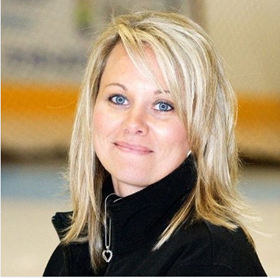Bruce Power works closely with its suppliers to strengthen Human Performance
From the Top
Vol 31 No 2 2021
22 July 2021
Inside WANO conducted an exclusive interview with Kathryn Harrison, Section Manager of Continuous Learning at Bruce Power, and Chair of the International Human Performance Industry Working Group. Kathryn explains how her organisation used a guideline developed by the working group to strengthen human performance of suppliers at its nuclear power stations.
 Provide a brief overview of your organisation and the nuclear power plants you operate.
Provide a brief overview of your organisation and the nuclear power plants you operate.
Bruce Power was established in 2001 and it is Canada’s only private sector nuclear generator. Our nuclear fleet of eight CANDU units generates up to 6,400 MW – all output is sold under contract with Canada’s Independent Electricity System Operator through to 2064.
Our 4,200 employees are the foundation of our accomplishments and are proud of the role they play in safely delivering clean, reliable, low-cost nuclear power to families and businesses across the province. The company has built strong roots in Ontario and is committed to protecting the environment and supporting local communities.
How has WANOs Human Performance Programme Assessment Model Guideline helped your organisation strengthen human performance?
At Bruce Power, we are currently executing a Major Component Replacement (MCR) of Unit 6, one of the largest construction sites in Canada. We have brought in a large amount of supplier and contract staff to perform the work. As with all work, safety remains at the heart of everything we do and is our number one value.
The reason this guideline was created was because a common challenge for WANO members is how to assess the maturity, health and progress of their programme. This also applies to how the nuclear business assesses the suppliers that work within their station.
Based on WANO GL 2019-03, Human Performance Programme Assessment Model, we customised a version that is applicable to our organisation and the expectations for our suppliers. This enabled us to understand the depth of engagement and understanding that our suppliers have with human performance values and tools. By doing this, we can proactively work together to ensure the safe execution of work through our human performance behaviours.
What has been your strategy with your supplier partners to strengthen human performance?
The key steps in our strategy have been as follows:
• We communicated the Vendor HU Assessment Model to key suppliers and aligned with them on an approach, which included our expectations for them to perform a self-assessment using the model.
• Suppliers presented their findings, which included recommended actions for improvement and to close gaps within their programmes.
• Human Performance Improvement Plans were developed to address areas for improvement, these were reviewed and submitted to the human performance managers for discussion.
In what ways and what types of training have helped your suppliers in this area?
Part of the assessment strategy with our suppliers is to review their human performance training to ensure that they are meeting the standards for Bruce Power in the use of the tools, and the supplier leadership’s ability and willingness to coach to the standard.
What have been the key benefits of the guideline for your organisation and staff?
The results have been twofold: the strong overall engagement from the supplier community, and improved alignment based on clarified expectations in improving human performance.
How has your involvement in the Human Performance Industry Working Group helped the industry to improve human performance?
During the height of the COVID-19 pandemic, our industry had to change the way we approached work. While each site and country approached the pandemic differently, one thing was constant. These unusual or changing conditions introduced risk and the potential for human error, and the barriers to protect from COVID-19 were challenging our human performance tools.
In 2020, two virtual forums, facilitated by WANO and the Human Performance Industry Working Group connected the nuclear industry on the challenges that we were all facing. Over 200 participants from around the world shared operating experience, lessons learned and their experiences moving through the pandemic. This excellent example highlights the strength of this group in rapid implementation of external operating experience and sharing of best practices industry wide.
Explain how you found out about the Human Performance Industry Working Group, and your role as its Chairperson?
I have always been interested in human behaviours and as a result took on the role of Human Performance Manager in the station in 2012. I began to participate in the WANO, INPO, CANDU Owners Group and supplier forums on human performance. The international working group gave me a whole new opportunity to share and collaborate on human performance.
As the Chairperson of the working group, I work with a dynamic group of professionals from around the world who are passionate about human performance. As a working group we share, listen and collaborate as a team to motivate, educate and reach the best possible outcomes to deliver event-free performance.
The collective experience that is held by this group has given me the opportunity to learn about culture, behaviours and human performance on a broader level. These learnings are taken back to my site for improvements.